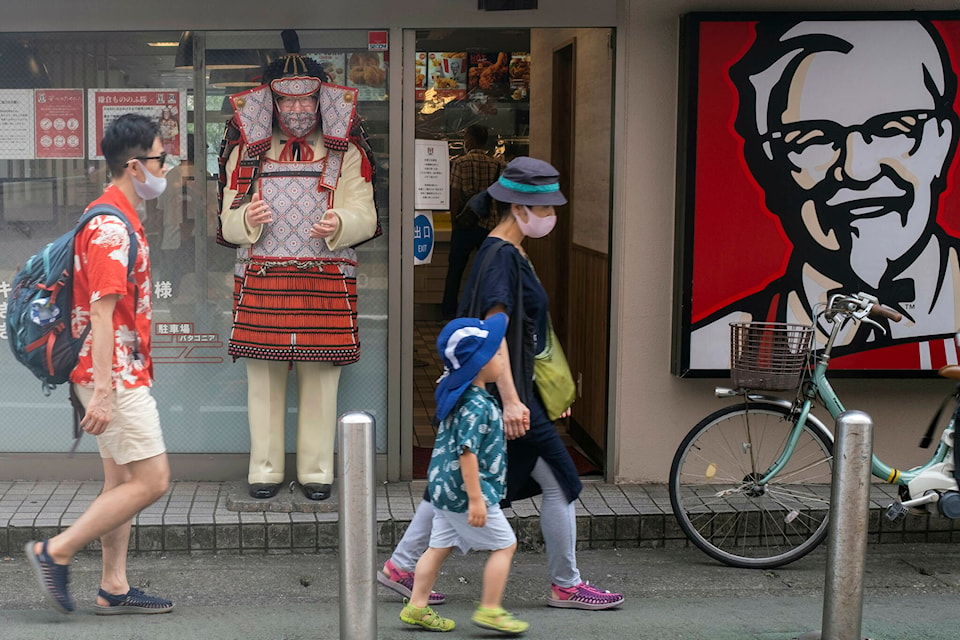Buckets of fried chicken do not necessarily come to mind when imagining a festive Christmas dinner but it is a very popular option.
An estimated 3.6 million Japanese families treat themselves to fried chicken from the American fast-food chain KFC on Christmas in continuing a tradition that dates back to 1974, four years after the chain opened its first location in Japan.
According to KFCB��Ԫ������ַ�s corporate material, the tradition started after staff at the companyB��Ԫ������ַ�s first location had overheard foreign customers complaining about the absence of turkey, leaving them no choice but to substitute one fowl for another kind.
This eventually inspired a more formal marketing campaign, taglined Kentucky for Christmas, which has since involved into a nationwide, elaborate campaign including statues of Colonel Sanders dressed in Santa attire and Christmas-exclusive menu items such as a premium roast chicken.
If this Japanese fetish for fried chicken sounds like a culinary gag, it isnB��Ԫ������ַ�t. Daily sales at some restaurants can be 10-times their usual take during the Christmas period and KFC Japan starts advertising and taking preorders and reservations for its holiday specials as early as late October, according to the companyB��Ԫ������ַ�s corporate material.
The manager who first hatched this scheme eventually became president and CEO of KFC Japan from 1984 to 2002.
Elsewhere in the world, food B��Ԫ������ַ� not chicken B��Ԫ������ַ� is thrown as part of Christmas traditions designed to divine the future, as is the case in Slovakia, where the oldest male member of a household throws a spoonful of bread pudding, known as Loksa, towards the ceiling. The more of it that sticks, the more pleasant the future will be. Parts of Ukraine also follow this tradition.
RELATED:
Other food traditions speak to the diversity of Christmas tastes. South African families serve deep-fried caterpillars of the Emperor moth as Christmas treats, while steamed sheep head, known as Smalahove, often appears on Norwegian plates. A 2015 video of American embassy officials sampling Smalahove as well as other local delicacies such as herring in mustard sauce neatly captures, shall we say, the squeamishness that the sight of a shrunken sheep head, with still bulging eyes, might elicit as it sits on your plate.
Other Christmas traditions around the world may require less intestinal fortitude, but perhaps a greater belief in the supernatural. In Norway, locals hide their brooms and mops on Christmas Eve to stop evil spirits from stealing them, thereby preventing them from going on celestial joyrides.
Comparable fears also animate the behaviour of German-speaking people (especially but not just those in Bavaria) during the twelve nights between Christmas Day and the Day of Epiphany (Jan. 6).
These Raunachte are believed to be a period during which evil spirits cause harmful, even deadly, mischief by exploiting the transition from the old to the new year lest people avoid certain behaviours or fail to perform others at the appropriate time.
The emergence and evolution of such beliefs and rituals (with variations thereof also existing in central, eastern and southeastern Europe) remain shrouded in the mist of time, but likely stem back to the pre-Christian period in EuropeB��Ԫ������ַ�s history.
Do you have a story tip? Email: vnc.editorial@blackpress.ca.
Follow us on and and like us on



